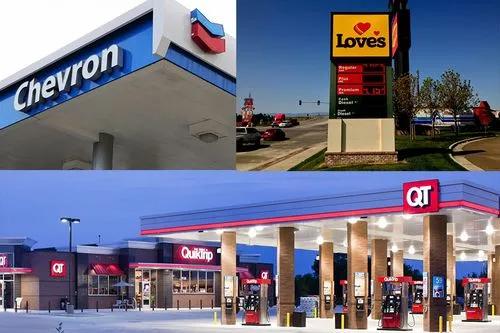How to deal with and repair a malfunctioning fuel dispenser
The handling and maintenance of a fuel dispenser malfunction require targeted operations based on the specific symptoms and causes of the malfunction. Here are some common fuel dispenser malfunctions and their handling and maintenance methods:

Firstly, unable to start or stop working
Phenomenon: The fuel dispenser cannot start or suddenly stops during operation.
Handling and maintenance:
Check power supply: Confirm if the power cord is securely connected and if the power outlet has power. Replace the power cord or outlet if necessary.
Check the control system: Check whether the control components such as circuit breakers and relays are working properly, and replace them if they are damaged.
Check the electric pump: If both the power supply and control system are normal, it may be a malfunction of the electric pump. Check if the motor is burnt out and if the pump body is stuck. If necessary, replace the motor or repair the pump body.
Secondly, inaccurate flow measurement
Phenomenon: The measurement result of the fuel dispenser does not match the actual fuel volume.
Handling and maintenance:
Calibrate Flow meter: Use standard measuring tools to calibrate the flow meter and adjust its measurement accuracy.
Check environmental factors: Pay attention to environmental factors such as temperature and pressure during refueling, which may affect the accuracy of the flowmeter.
Replace worn parts: If the internal sensors, plungers, and other components of the flowmeter are severely worn, they should be replaced in a timely manner.
Thirdly, the oil output speed is slow or unable to output oil
Phenomenon: The fuel dispenser produces slow or no fuel at all.
Handling and maintenance:
Cleaning the oil pipeline: Check and clean the oil pipeline to remove blockages such as sludge and impurities.
Check the electric pump: Confirm that the electric pump is working properly, the motor speed is sufficient, and there is no leakage in the pump body.
Check the fuel tank seal: Ensure that the fuel tank is well sealed, with no leaks or air ingress.
Fourth, excessive noise
Phenomenon: Abnormal noise is generated during the operation of the fuel dispenser.
Handling and maintenance:
Check the electric pump: Confirm whether the bearings, blades, and other components of the electric pump are worn, and replace them if necessary.
Check the motor: Check whether the carbon brush, stator and other components of the motor are damaged. If they are damaged, they need to be replaced.
Adjust pipeline layout: Check whether the pipeline layout is reasonable and avoid resonance phenomenon.
Fifth, display screen malfunction
Phenomenon: The fuel dispenser display screen cannot display normally or displays incorrect information.
Handling and maintenance:
Check the display screen: Confirm if the display screen is damaged, such as cracked LCD screen, backlight not working, etc., and replace the display screen.
Check the control system: Check whether the control circuits, control boards, and other components related to the display screen are working properly. If they are damaged, they need to be replaced or repaired.
Sixth, accuracy exceeds the tolerance
Phenomenon: The measuring accuracy of the fuel dispenser exceeds the allowable range.
Handling and maintenance:
Replace sensor: If the sensor is damaged and the counting pulse is lost, the sensor needs to be replaced.
Repair flowmeter: Check the internal sealing of the flowmeter and repair the leakage points.
Maintenance of oil and gas separator: Ensure the normal operation of the oil and gas separator and prevent the presence of gas in the oil from affecting the measurement accuracy.
Replace motherboard: If the motherboard is damaged and causes measurement accuracy to exceed the tolerance, it needs to be replaced.
Seventh, Handling of Other Common Malfunctions
Refueling machine trip count: Check whether the oil pipeline leaks oil or gas, whether the oil outlet valve is stuck or not tightly sealed, etc., and promptly repair the leakage point or replace damaged parts.
Cannot automatically shut down during quantitative refueling: Check if the motherboard is faulty, if the unit price is lost, etc. If necessary, replace the motherboard or reset the unit price.
Fuel dispenser exhaust pipe spitting oil: Check whether the oil-gas separator is faulty, whether the sealing gasket is damaged, etc., and replace damaged parts or repair the fault point in a timely manner.
When dealing with a fuel dispenser malfunction, a preliminary judgment should be made based on the symptoms of the malfunction, and then the cause of the malfunction should be gradually investigated and repaired according to the above method. If the fault is complex or difficult to handle, professional maintenance personnel should be contacted in a timely manner for handling. At the same time, gas stations should establish a sound fault handling mechanism and maintenance system to ensure the normal operation and extended service life of fuel dispensers.
Wenzhou Jiahao Petroleum Machinery Co, Ltd is a professional manufacturer of petroleum machinery products since 2010. The main products are Fuel dispenser components including Automatic Fuel nozzle, Adblue DEF Nozzle, Vapor Recovery Nozzle, Flowmeter and Fuel pumps.





